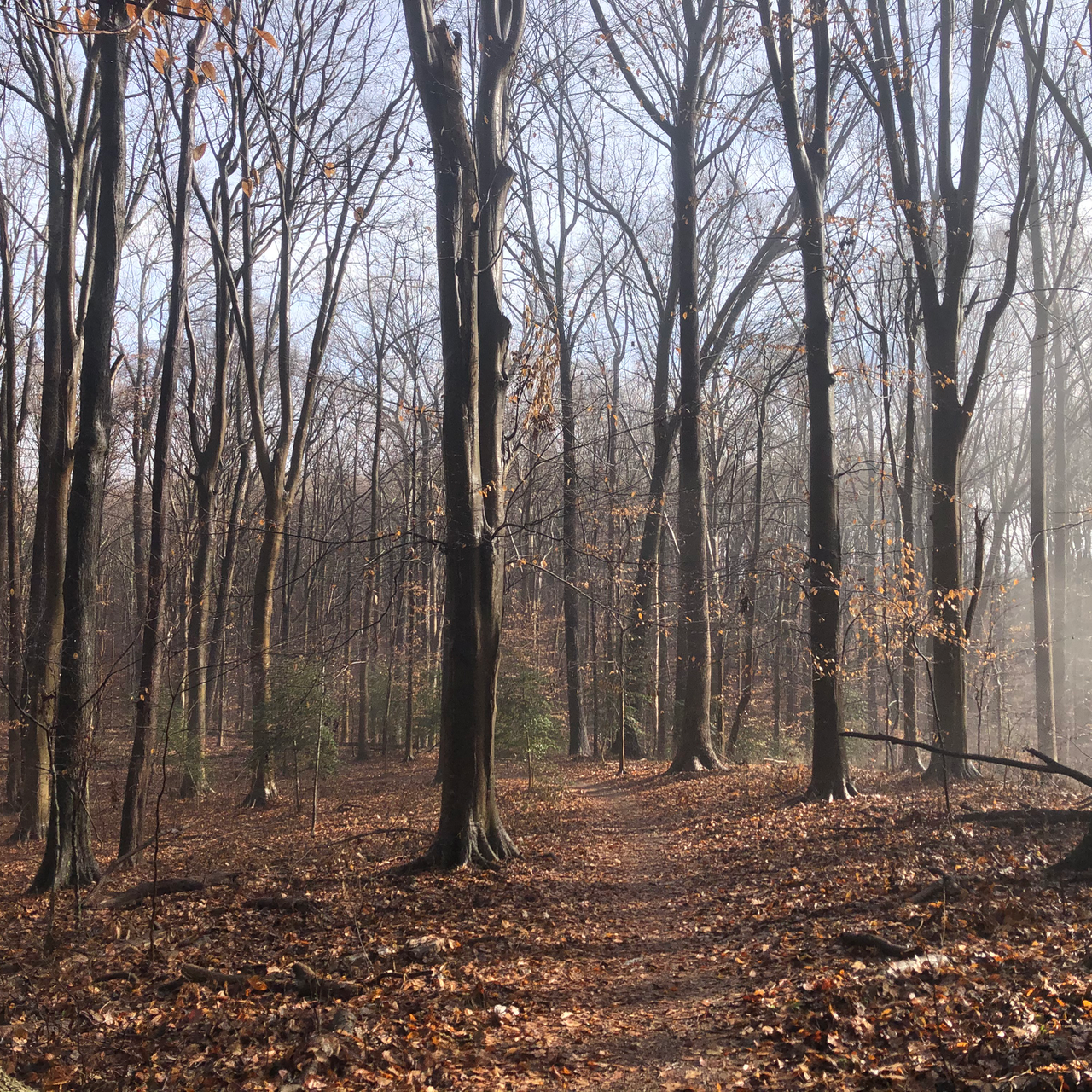Ever wonder how trees transfer nutrients? The trunk is the conduit for the work of the leaves and the roots. Learn about the basic parts of the tree trunk. Find out the function of each part. It’s another amazing feat of nature.
Five Parts of a Tree Trunk From the Outside In
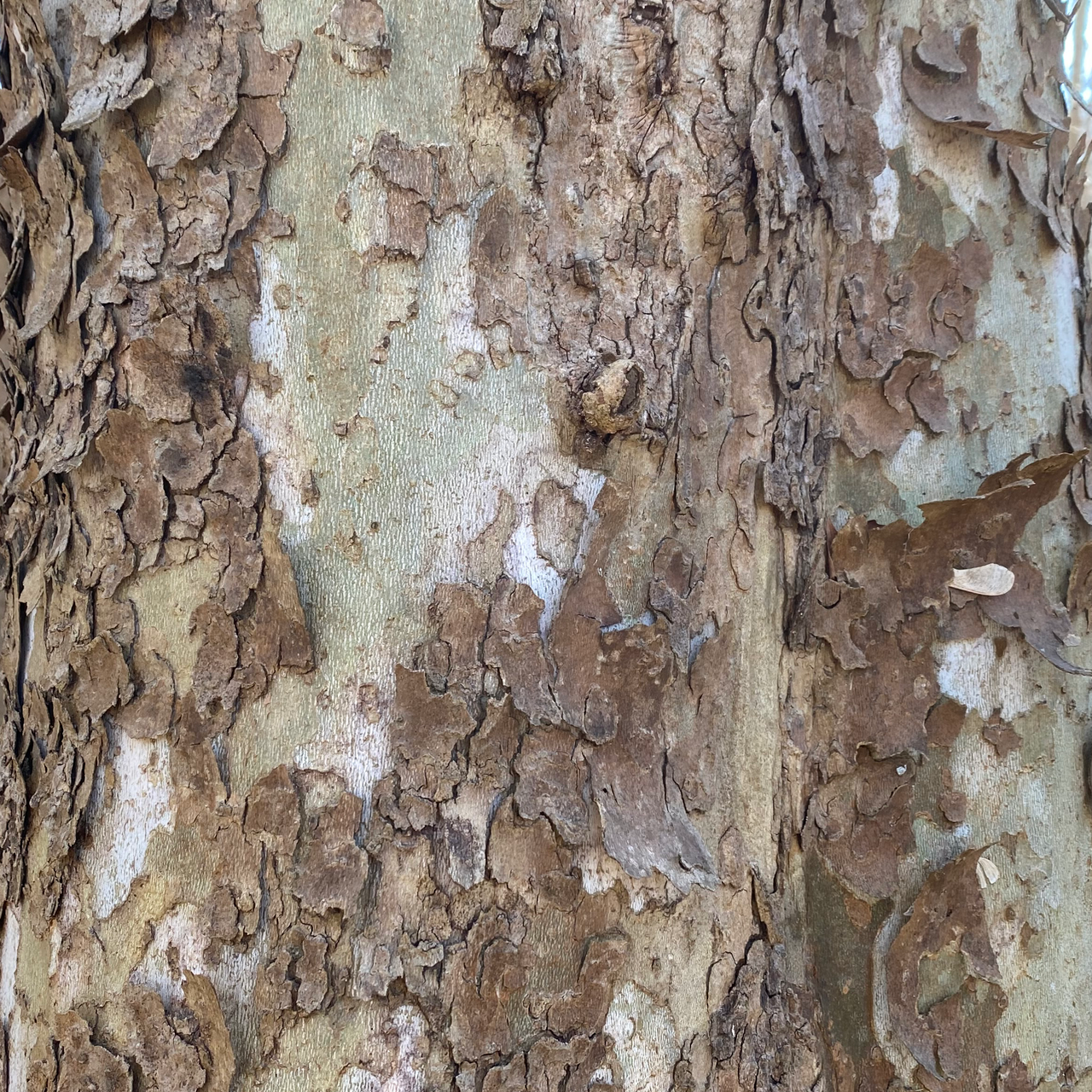
Outer Bark
The outer bark mostly serves as protection. First, it keeps rain out, but it keeps moisture in. Internal moisture is different than wood being rain soaked. Second, it keeps insects and pests out. Finally bark provides insulation from heat and cold. In some species, outer bark protects the tree from fire.
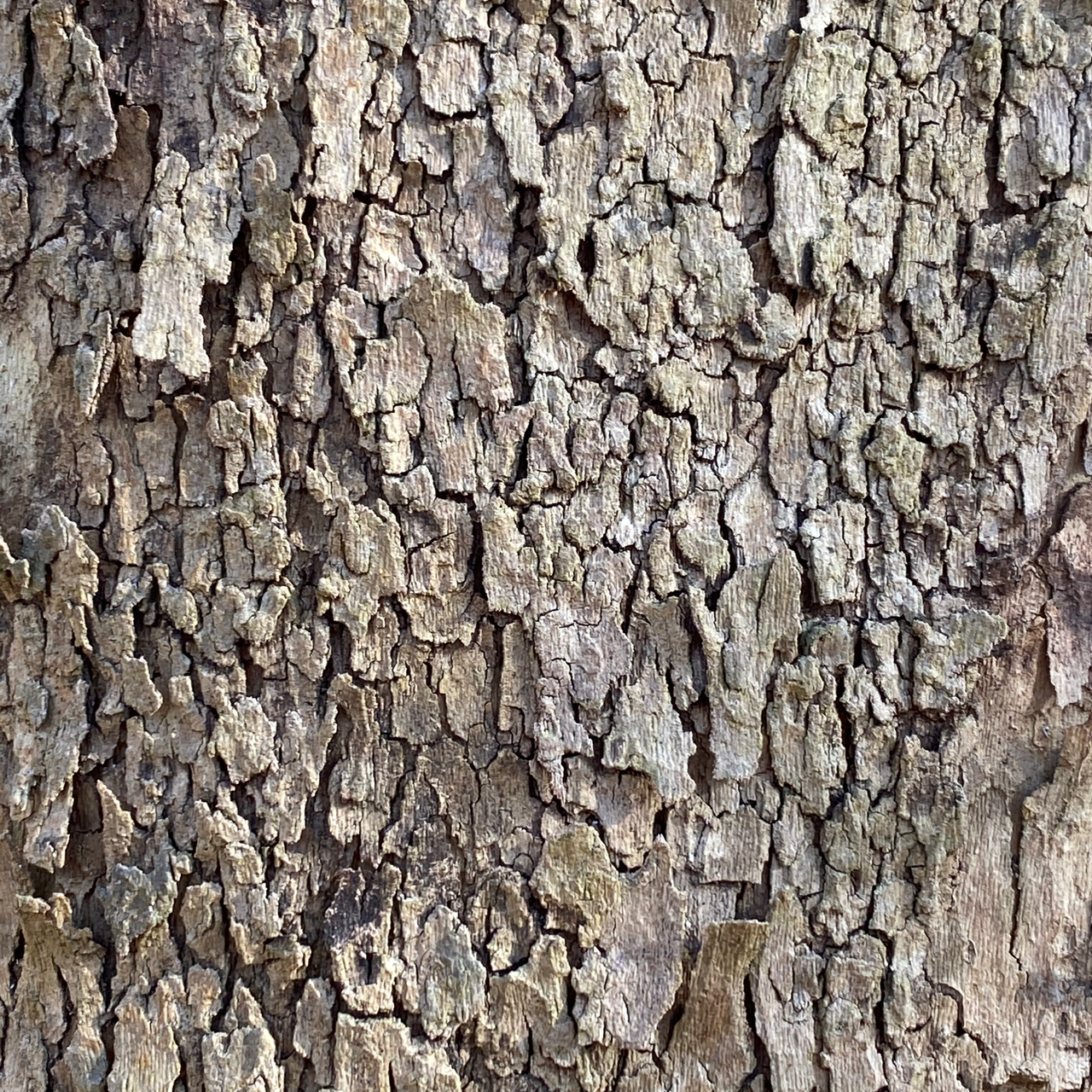
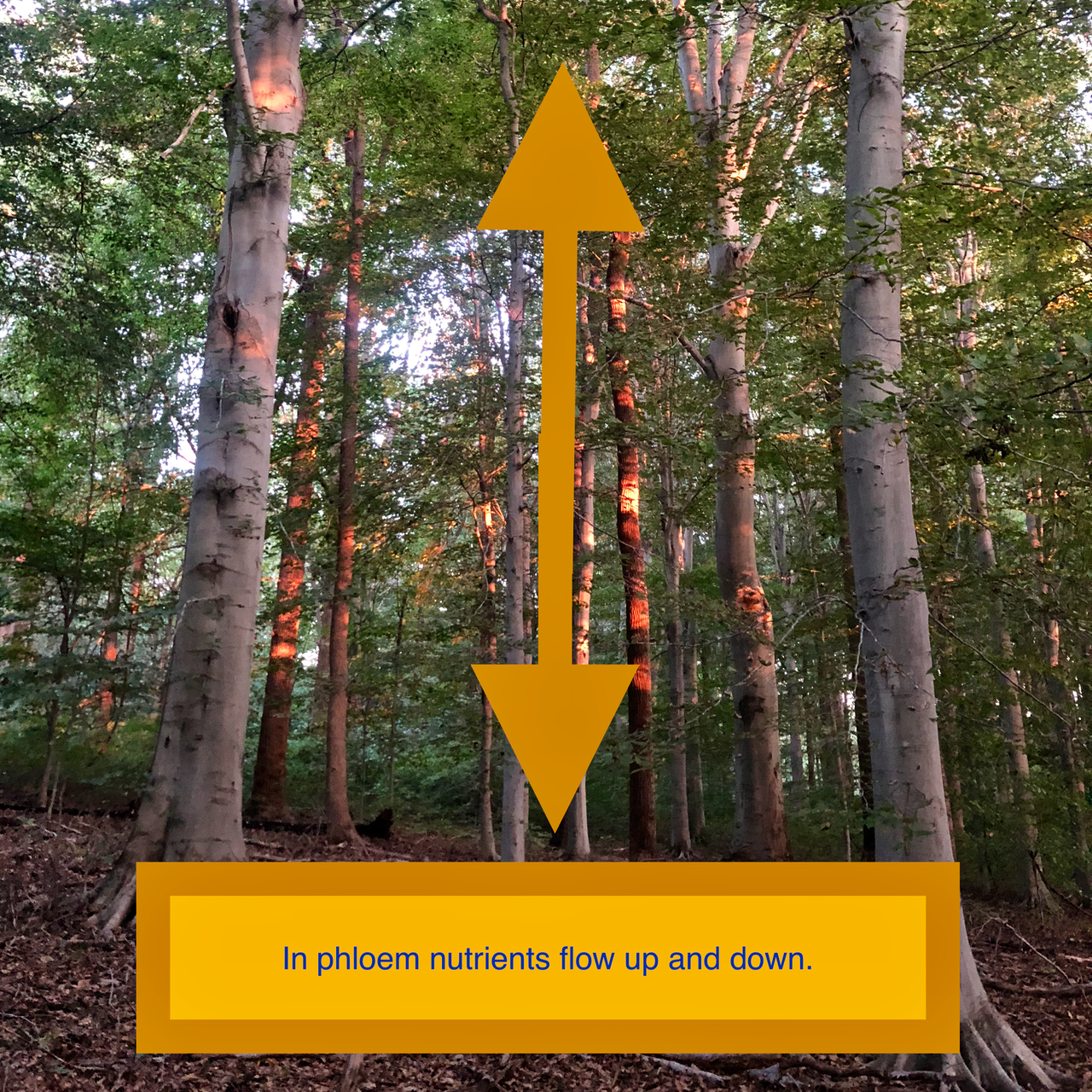
Inner Bark
Inner bark or Phloem is living tissue. It actively transports nutrients made during photosynthesis. These cells are connected forming a tube with permeable end plates that allow nutrients to flow up or down. Phloem is only a small part of the tree. Dead phloem contributes to the bark layer.
Middle or Growth Part of a Tree Trunk
Cambium Cells
The middle layer is called the cambium cell layer. This is the growing part of the tree. First buds produce growth hormones. These hormones travel through the phloem. Finally, they stimulate cell growth in the cambium. It produces xylem cells, phloem, or more cambium. As a result, the tree grows inwards and outwards from the cambium. The cambium layer is very thin and difficult to see. This is a walnut log.
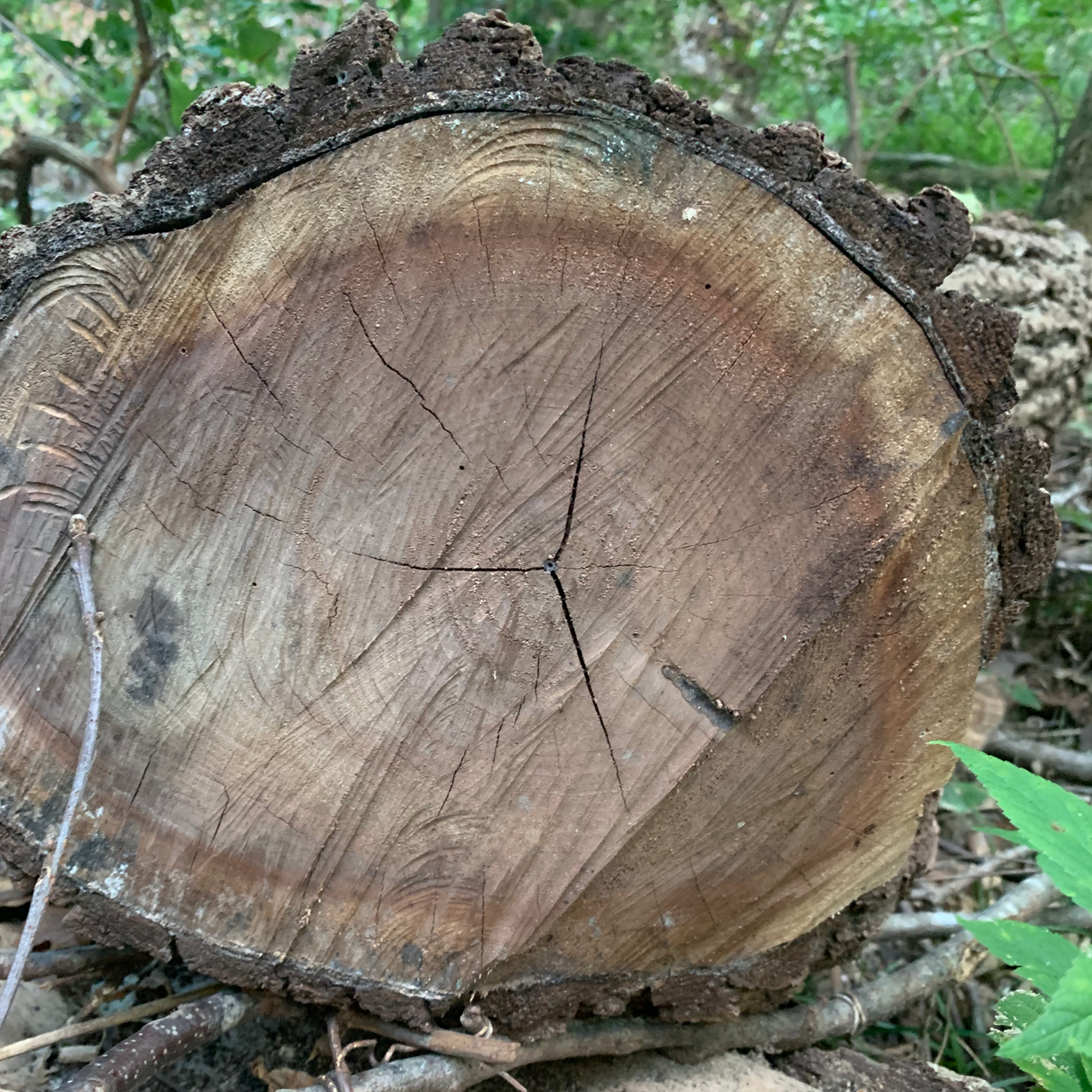
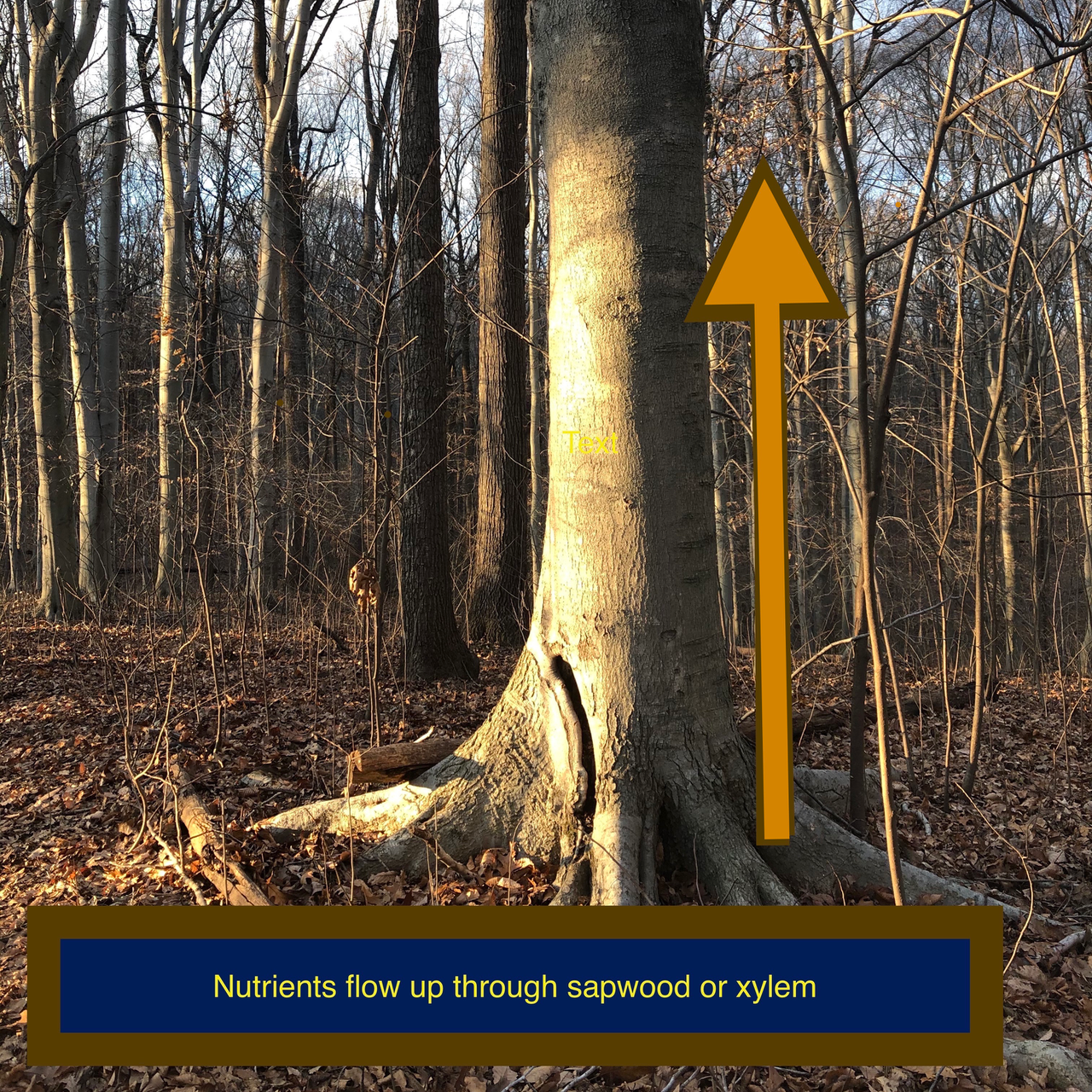
Sapwood or Xylem
Sapwood or xylem is really important. It is the pipeline for water and nutrients moving up from the roots to the leaves. The majority of xylem tissue is dead. Xylem tissue makes up a large part of the plant tissue. Movement of nutrients through xylem is passive. Sapwood or xylem eventually becomes heartwood.
Innermost Part of Tree Trunks
Heartwood
Heartwood is in the center. As the tree produces new sapwood, or xylem, the older cells are no longer used. They become heartwood. The xylem is composed of lignan which is very strong, so you guessed it. The function of heartwood is structural stability. A living tree can survive without a complete trunk full of heartwood, however many trees fail at points where heartwood has decayed.
.
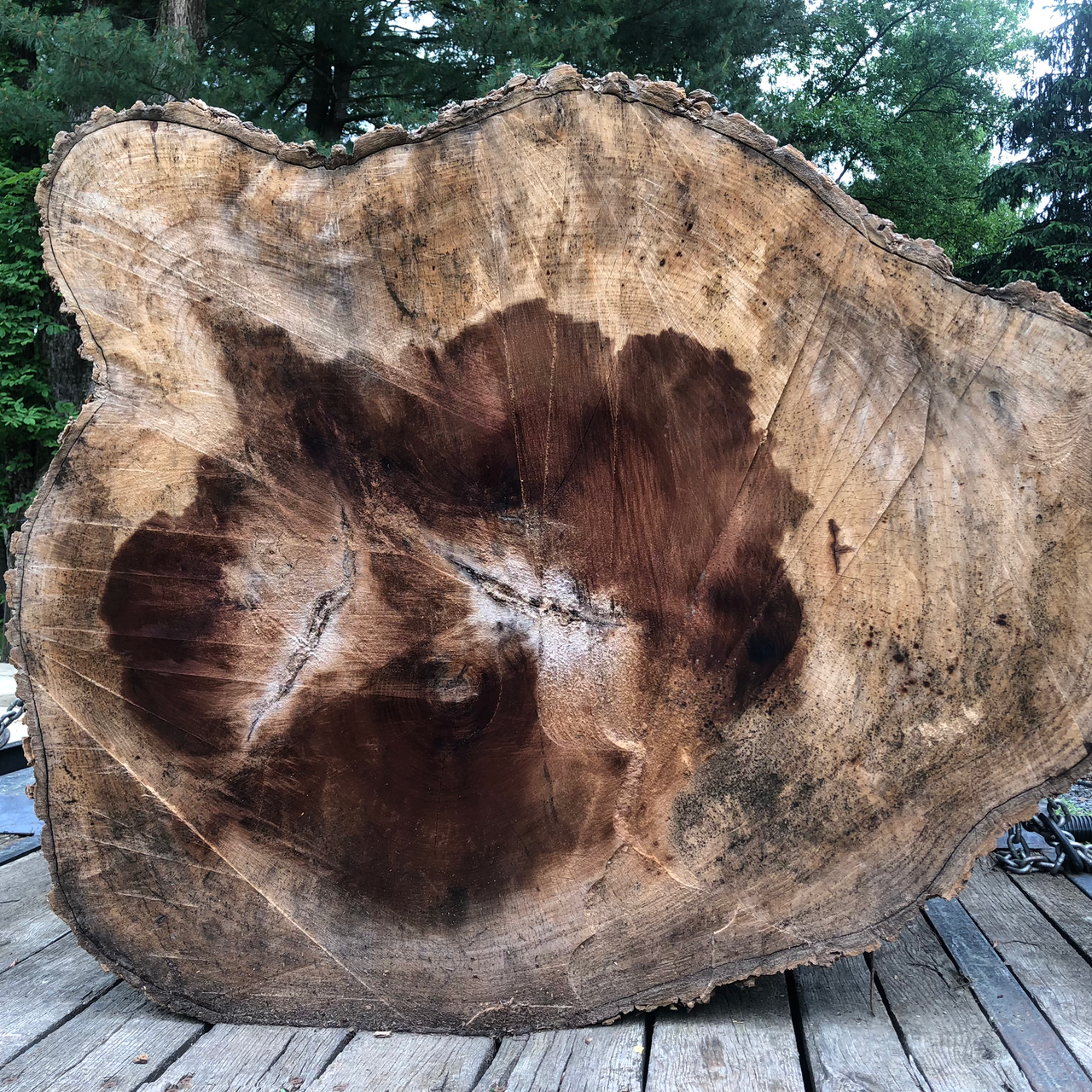
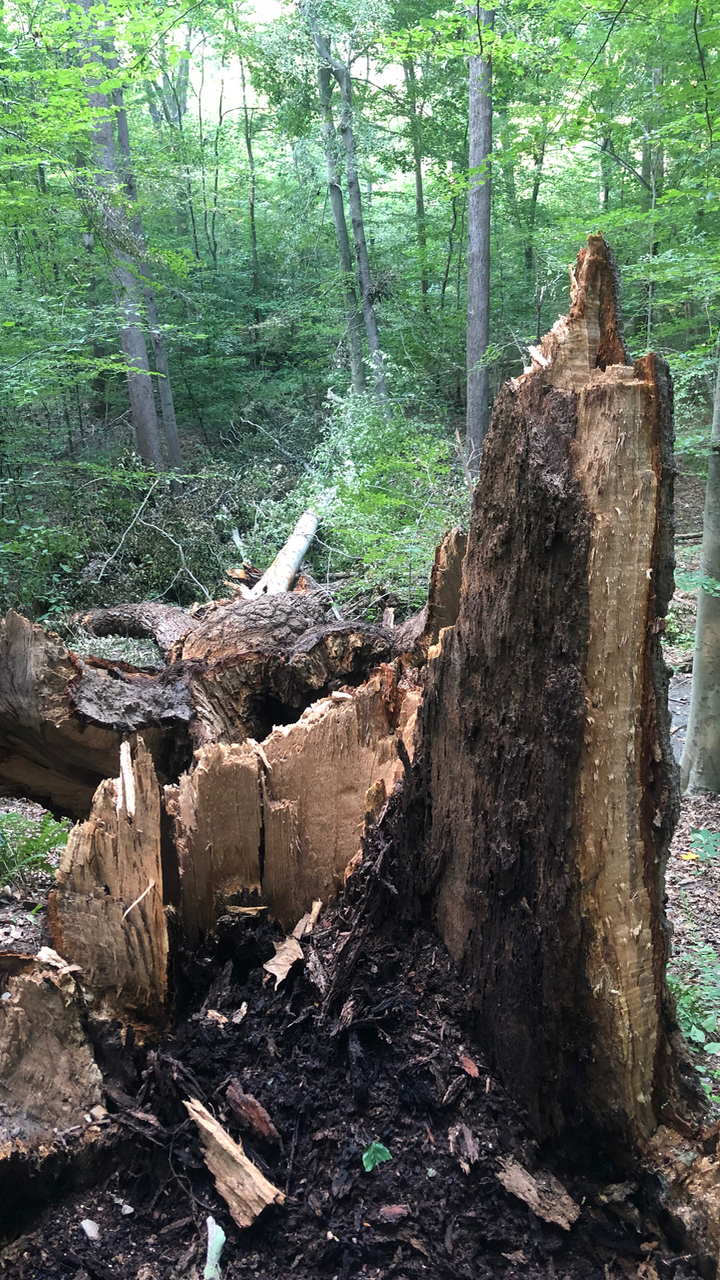
References
Arborday Foundation, “Anatomy of a Tree, the Inside Story”, access 02/29//2020, https://www.arborday.org/trees/ringstreenatomy.cfm
North Carolina Forestry Association, “Parts of a Tree”, access 02/20/2020, https://www.ncforestry.org/teachers/parts-of-a-tree/
Vivadiffernces, “Understanding Phloem vs. Xylem Cells: Primary Differences Plus Similarities”, access 03/01/2020, https://vivadifferences.com/understanding-phloem-vs-xylem-cells/
